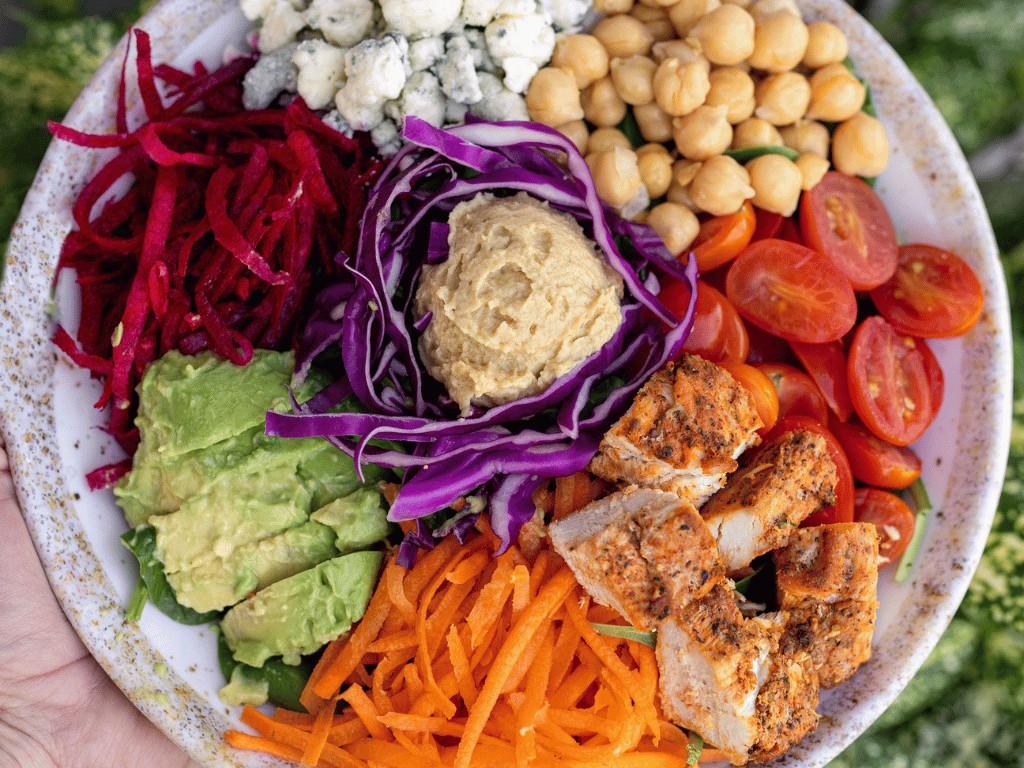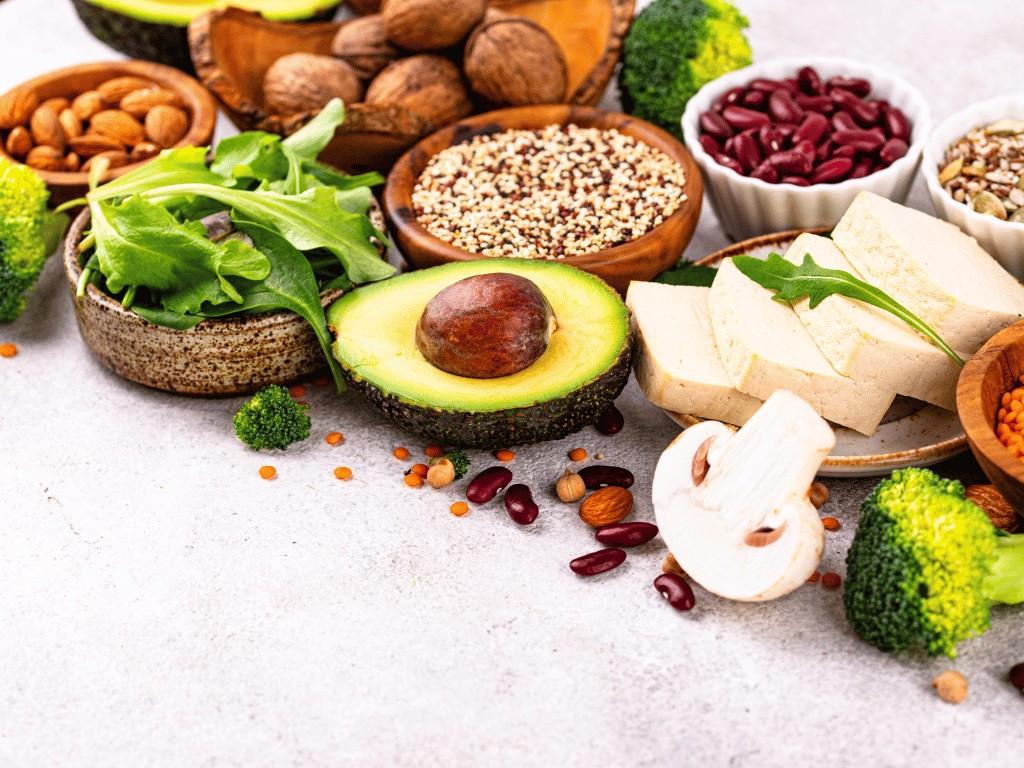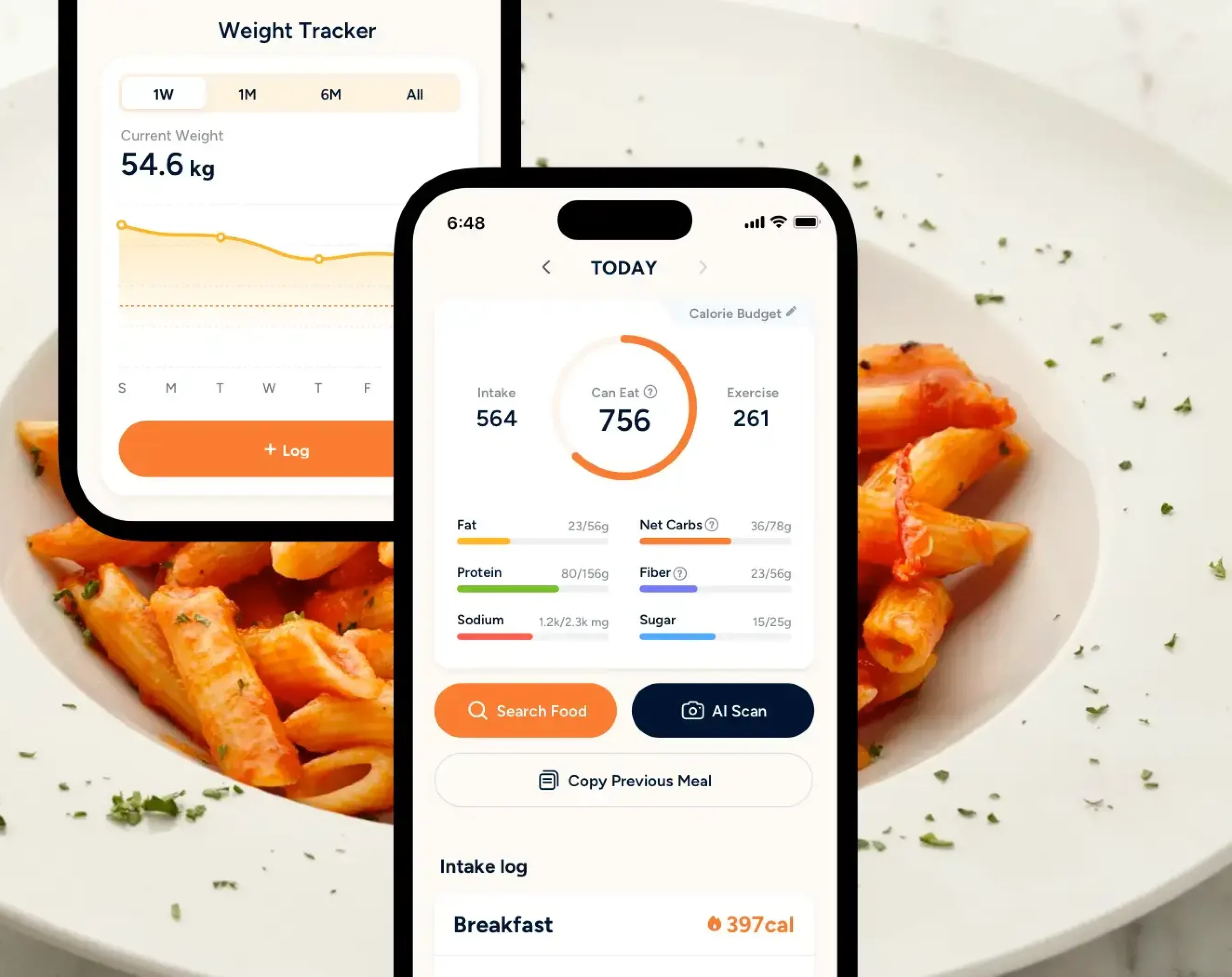There are many reasons why someone may choose to go on an anti-inflammatory diet. Chronic inflammation is one of the most significant health concerns that lasts for several months to years [1]. Chronic diseases such as diabetes, rheumatoid arthritis, and heart disease can contribute to its prevalence.
The good news is that certain types of foods can have anti-inflammatory effects, influencing inflammation levels in your body. In this article, we’ll be introducing a comprehensive 21-day anti-inflammatory diet plan that will help you reduce inflammation, improve your health, and be your best self.
Key Takeaways
- Long-term inflammation can contribute to diseases such as diabetes, heart disease, and rheumatoid arthritis.
- Anti-inflammatory diets focus on whole, minimally processed foods while limiting processed foods, refined carbs, red meat, and excessive alcohol.
- Following an anti-inflammatory diet can support heart health, improve joint function, stabilize blood sugar, aid weight management, enhance immunity, boost energy, and improve sleep quality.
- Regular exercise, stress management, adequate sleep, avoiding smoking, and, if needed, supplements (like omega-3 or curcumin) help reduce inflammation alongside dietary changes.
How Does Inflammation Occur?

Inflammation is part of your body’s natural defense mechanism. When you get an injury, infection, or have any harmful stimuli entering your body, your immune system will trigger an inflammatory response to protect and heal itself.
There are 2 kinds of inflammation: acute inflammation and chronic inflammation [1].
Acute inflammation happens as a result of trauma or bacterial infection. It spreads rapidly and appears severe in a short amount of time but may last for only a few days or up to 2 weeks.
Chronic inflammation, on the other hand, is a slow, long-term inflammation that may last for several months to years. The full extent and effects of chronic inflammation often vary based on the cause of injury and the ability to repair and recover.
Symptoms of inflammation

If it is an acute inflammation, you may notice symptoms such as:
- Redness
- Heat
- Swelling
- Pain
- Loss of function or not being able to move the affected area
For chronic inflammation, the signs and symptoms would be more severe [2]:
- Exhaustion
- Fever
- General illness
- Changes in the blood cells
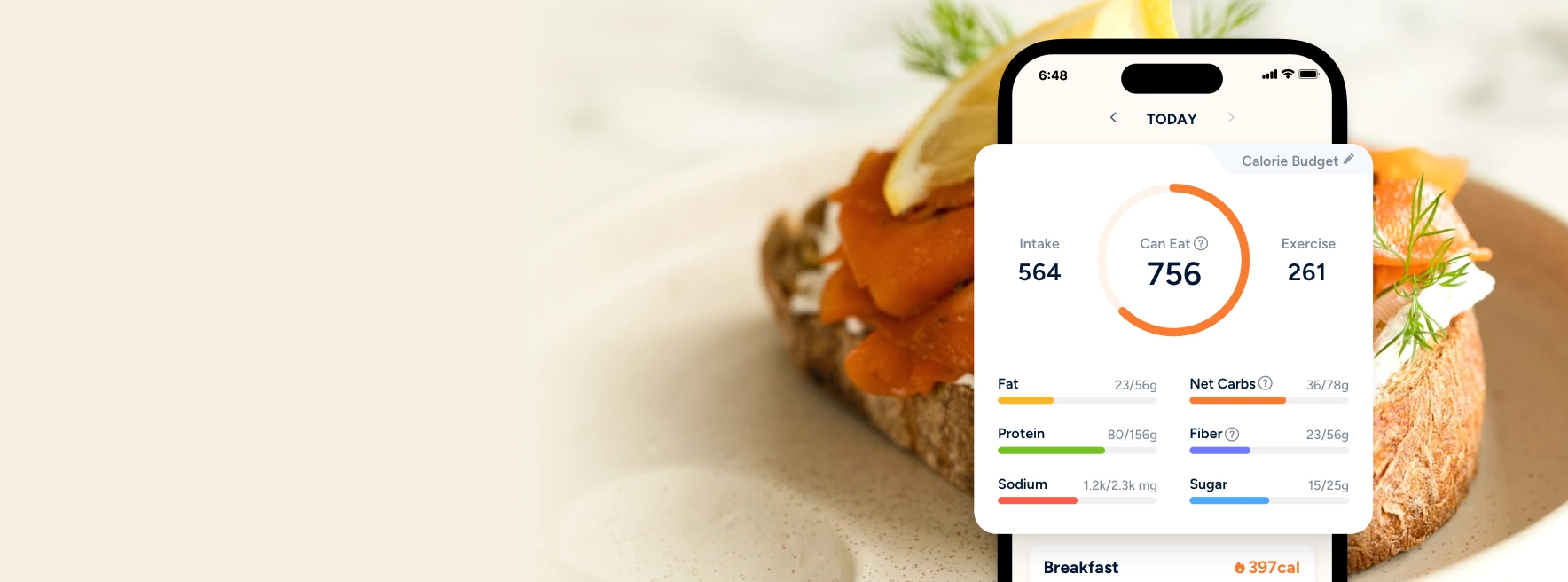
Smarter Nutrition Tracking
Track calories and over 100 other nutrients all in one place.
Download Eato For FreeTriggers of chronic inflammation
Several factors can trigger chronic inflammation, including [3] :
- Dietary Factors: Fried foods, sodas, refined carbohydrates, and red meat.
- Lifestyle Factors: Chronic stress, lack of sleep, sedentary behavior, and smoking.
- Environmental Toxins: Exposure to pollutants, chemicals, and other environmental toxins.
- Excess Body Weight: Adipose tissue produces inflammatory compounds, making obesity a significant risk factor.
- Gut Health: An imbalanced gut microbiome can lead to increased intestinal permeability.
How to Reduce Inflammation in the Body
There are many different methods that you can adopt to reduce inflammation levels in your body, such as [1] :
a) Not smoking
Cigarette smoking lowers the production of anti-inflammatory molecules in our body, which can cause a flare-up. Thus, it’s best to avoid it.
b) Exercising regularly
Regular physical activity has anti-inflammatory effects and helps with maintaining a healthy weight.
c) Managing stress
Stress is a huge risk factor in many medical conditions. When you are stressed, it can increase the production of inflammatory chemicals in the body. It’s important to be mindful of your stress levels and engage in relaxing activities like meditation, yoga, or spending time in nature.
d) Getting quality sleep
Poor sleep quality and insufficient sleep duration also lead to increased inflammation. Try to aim for 7–9 hours of quality sleep each night.
e) Eating a balanced diet
A diet that is rich in saturated fats, trans-fats, or refined sugar can result in higher production of inflammatory molecules. To reduce it, you should aim for a healthy diet that is balanced in nutrition.
f) Taking supplements
Those with chronic inflammation may wish to try supplements with anti-inflammatory compounds. Some examples of anti-inflammatory compounds are omega-3, magnesium, and curcumin.
What is an Anti-Inflammatory Diet?
An anti-inflammatory diet is a diet approach that incorporates foods with anti-inflammatory properties to reduce chronic inflammation in the body [4].
The emphasis is on consuming whole, minimally processed foods and foods that are rich in dietary fibre, vitamin C, vitamin E, omega-3 fatty acids, zinc, and polyphenols. These vitamins and minerals help to decrease inflammatory markers in the body.
Some examples of anti-inflammatory diets are the Mediterranean diet, the Dietary Approaches to Stop Hypertension (DASH) diet, and traditional Okinawan, Nordic, or Mexican diets.
Foods to Emphasize: Anti-inflammatory foods are mostly unprocessed, including whole grains, green leafy vegetables (such as spinach), legumes (such as beans and lentils), fatty fish (such as salmon,) and berries.
Foods to Limit: High intake of foods like refined carbohydrates, processed meats, and alcohol can lead to inflammation.
Health Benefits of Anti-Inflammatory Diet
Following an anti-inflammatory diet can provide numerous health benefits beyond just reducing inflammation:
a) Support heart health
Anti-inflammatory foods support heart health by reducing risk factors for heart disease, including high blood pressure, elevated cholesterol, and arterial inflammation.
b) Manage weight
The diet’s emphasis on whole foods and healthy fats can help with weight loss and maintenance, reducing inflammation associated with excess weight.
c) Improves diabetes management
By stabilizing blood sugar levels and improving insulin sensitivity, the diet can help manage and prevent type 2 diabetes.
d) Supports joint health
Reducing inflammation can alleviate symptoms of arthritis and other inflammatory joint conditions.
e) Enhances the immune system
By reducing chronic inflammation, the diet allows your immune system to function more effectively.
f) Improves sleep quality
Reduced inflammation can improve sleep quality and duration.
g) Increases energy levels
Many people report higher energy levels when following an anti-inflammatory diet.

Weight Loss Has Never Been Easier
Get accurate nutrition info instantly. Keep track of your progress.
Download Eato For FreeList of Anti-Inflammatory Foods
When going on an anti-inflammatory diet, it’s important to keep in mind the foods that are inflammatory and the foods that are not.
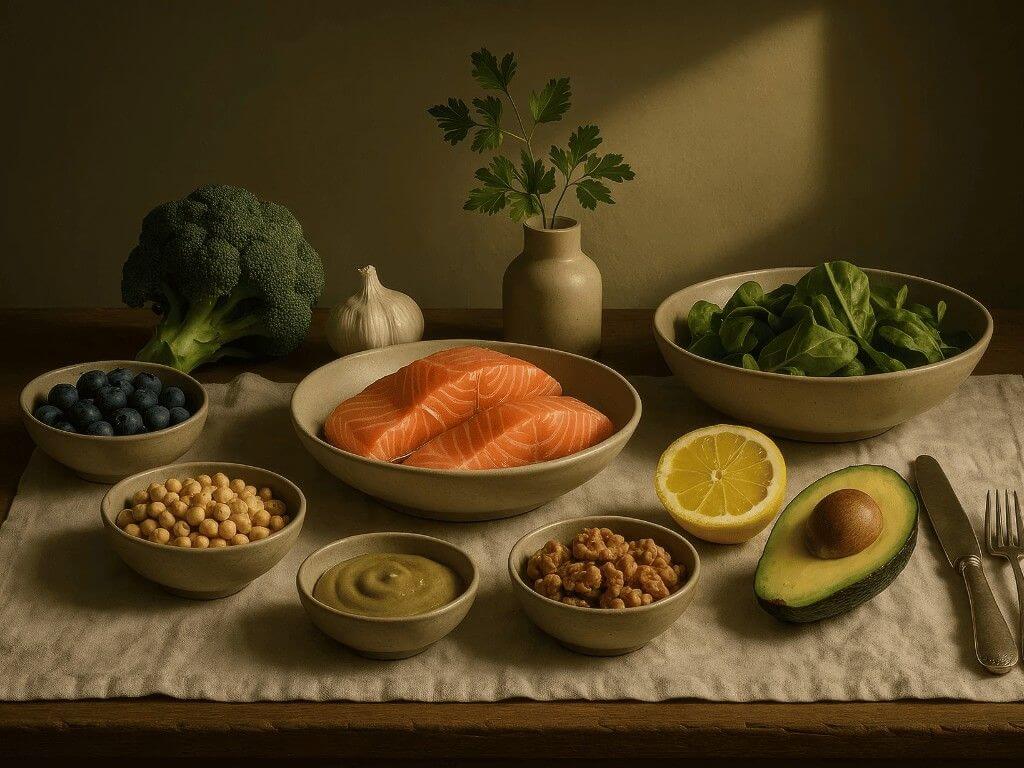
Here is a list of common anti-inflammatory foods to include in your meals:
| Category | Examples | Key Benefits |
|---|---|---|
| Fatty fish | Salmon, mackerel, sardines, anchovies, tuna | High in omega-3 fatty acids that lower inflammation and support heart health |
| Dark leafy greens | Spinach, kale, arugula, Swiss chard | Provide antioxidants and phytonutrients that protect cells |
| Cruciferous vegetables | Broccoli, cauliflower, cabbage, radish | Contains sulforaphane, which helps regulate the immune response |
| Berries | Blueberries, strawberries, raspberries, blackberries | Rich in antioxidants that reduce oxidative stress |
| Nuts and seeds | Walnuts, almonds, flaxseeds, chia seeds | Supply healthy fats, fiber, and plant-based protein |
| Olive oil | Extra virgin olive oil | Contains oleocanthal with natural anti-inflammatory effects |
| Garlic and onions | Garlic, onions | Sulfur compounds reduce inflammation and support immunity |
| Whole grains | Oats, quinoa, brown rice, whole wheat | Provide fiber and nutrients that stabilize blood sugar |
| Legumes | Beans, lentils, chickpeas | Rich in fiber and plant protein that promote gut health and lower inflammation |
List of Inflammatory Foods
Here is a list of inflammation-promoting foods that should be limited or avoided to reduce inflammation:
| Category | Examples | Reason to Limit or Avoid |
|---|---|---|
| Processed meats | Bacon, sausage, hot dogs, deli meats | Contain nitrates and preservatives that promote inflammation and oxidative stress |
| Refined carbohydrates | White pasta, white rice, white bread | French fries, fried chicken, and deep-fried snacks |
| Sugary foods and beverages | Sodas, candy, pastries, foods with added sugars | Excess sugar triggers cytokine production and promotes fat storage and inflammation |
| Fried foods | High saturated fat content is linked to higher inflammatory markers like CRP | High in oxidized oils and trans fats that contribute to systemic inflammation |
| Trans fats | Margarine, baked goods, processed foods | Raise LDL (“bad”) cholesterol and lower HDL (“good”) cholesterol, increasing inflammation |
| Excessive red meat | Beef, lamb, pork, and other processed or fatty cuts | A high omega-6 fatty acid ratio can disrupt balance with omega-3s and promote inflammation |
| Refined vegetable oils | Corn oil, soybean oil, sunflower oil | High omega-6 fatty acid ratio can disrupt balance with omega-3s and promote inflammation |
| Processed snack foods | Chips, crackers, packaged snacks | Contain refined carbs, added sugar, and trans fats that trigger inflammatory responses |
| Alcohol | Beer, wine, spirits (in excess) | Excessive intake increases gut permeability and inflammatory cytokine production |
| Ultra-processed foods | Causes rapid spikes in blood sugar and insulin levels, leading to inflammation | Contain additives, preservatives, and sugars that activate inflammatory messengers |
21-Day Anti-Inflammatory Diet Meal Plan to Fight Inflammation (With PDF)
This comprehensive anti-inflammatory meal plan provides three weeks of anti-inflammatory meals designed to reduce inflammation while providing delicious, satisfying nutrition.
Here is an overview of foods for the three weeks:
Week 1
Day 1
- Breakfast: Overnight oats with berries, walnuts, and cinnamon
- Lunch: Spinach salad with grilled salmon, avocado, and olive oil dressing
- Dinner: Turmeric-spiced lentil soup with vegetables
- Snack: Green tea and a handful of almonds
Day 2
- Breakfast: Smoothie with spinach, berries, Greek yogurt, and flaxseed
- Lunch: Quinoa bowl with roasted vegetables and chickpeas
- Dinner: Baked cod with steamed broccoli and sweet potato
- Snack: Green apple slices with natural peanut butter
Day 3
- Breakfast: Vegetable omelet with spinach and tomatoes
- Lunch: Mediterranean wrap with hummus, vegetables, and olives
- Dinner: Grilled chicken with asparagus and brown rice
- Snack: Berries with a small portion of dark chocolate
Day 4
- Breakfast: Chia pudding with coconut milk and berries
- Lunch: Lentil and vegetable soup with whole-grain bread
- Dinner: Baked salmon with roasted Brussels sprouts
- Snack: Herbal tea and walnuts
Day 5
- Breakfast: Greek yogurt with nuts and berries
- Lunch: Kale salad with grilled chicken and avocado
- Dinner: Vegetable stir-fry with tofu and brown rice
- Snack: Celery sticks with hummus dip
Day 6
- Breakfast: Smoothie bowl with acai, berries, and granola
- Lunch: Quinoa salad with roasted vegetables
- Dinner: Grilled mackerel with steamed vegetables
- Snack: Green tea and a small handful of seeds
Day 7
- Breakfast: Oatmeal with cinnamon, berries, and nuts
- Lunch: Buddha bowl with various colored vegetables
- Dinner: Herb-crusted chicken with roasted root vegetables
- Snack: Herbal tea and dark chocolate
Week 2
Day 8
- Breakfast: Green smoothie with spinach, banana, and almond milk
- Lunch: Salmon salad with mixed greens and olive oil
- Dinner: Vegetable curry with chickpeas and quinoa
- Snack: Berries and almonds
Day 9
- Breakfast: Avocado toast on whole-grain bread
- Lunch: Lentil and vegetable stew
- Dinner: Grilled sardines with roasted vegetables
- Snack: Green tea and walnuts
Day 10
- Breakfast: Granola yogurt parfait with mixed berries
- Lunch: Quinoa salad with roasted sweet potato
- Dinner: Baked chicken with steamed broccoli
- Snack: Apple slices with almond butter
Day 11
- Breakfast: Coconut hia seed pudding with berries
- Lunch: Mediterranean bowl with hummus and vegetables
- Dinner: Grilled salmon with asparagus
- Snack: Herbal tea and dark chocolate
Day 12
- Breakfast: Smoothie with berries, spinach, and protein powder
- Lunch: Kale and quinoa salad
- Dinner: Vegetable and bean soup
- Snack: Cucumber with hummus
Day 13
- Breakfast: Oatmeal with a dash of turmeric, berries, and nuts
- Lunch: Grilled chicken salad with mixed vegetables
- Dinner: Baked cod with roasted vegetables
- Snack: Green tea and seeds
Day 14
- Breakfast: Greek yogurt with berries and honey
- Lunch: Vegetable soup with whole-grain bread
- Dinner: Grilled chicken with steamed vegetables
- Snack: Herbal tea and nuts
Week 3
Day 15
- Breakfast: Smoothie bowl with acai and berries
- Lunch: Quinoa bowl with roasted vegetables
- Dinner: Baked salmon with roasted sweet potato
- Snack: Apple slices with almond butter spread
Day 16
- Breakfast: Coconut chia pudding
- Lunch: Lentil salad with vegetables
- Dinner: Grilled mackerel with asparagus
- Snack: Green tea and walnuts
Day 17
- Breakfast: Oatmeal with cinnamon powder and berries
- Lunch: Mediterranean wrap with vegetables
- Dinner: Vegetable stir-fry with tofu cubes
- Snack: Bowl of berries with dark chocolate
Day 18
- Breakfast: Green smoothie with spinach and banana
- Lunch: Kale salad with roasted chickpeas
- Dinner: Baked chicken with roasted vegetables
- Snack: Herbal tea and a handful of almonds
Day 19
- Breakfast: Granola yogurt parfait
- Lunch: Quinoa salad with roasted sweet potato
- Dinner: Grilled sardines with vegetables
- Snack: Cucumber with hummus dip
Day 20
- Breakfast: 2 slices of sourdough toast with avocado and tomatoes
- Lunch: Lentil vegetable soup
- Dinner: Oven-baked cod with steamed broccoli florets
- Snack: Green tea and sunflower seeds
Day 21
- Breakfast: Berry smoothie blend with spinach
- Lunch: Mediterranean bowl with hummus
- Dinner: Grilled salmon with stir-fried asparagus
- Snack: Bowl of berries with dark chocolate
Is this an easy anti-inflammatory diet for beginners?
Yes, this anti-inflammatory diet is designed to be beginner-friendly while still being highly effective. Here’s why it works well for newcomers:
- Simple Meal Preparation: These ideas can help you start building meals with anti-inflammatory foods. For breakfast, start the day with oatmeal topped with berries, an apple, or a fruit smoothie. For lunch, toss together a salad of dark greens, beans, and colorful fruit and vegetables, then sprinkle with nuts or seeds.
- Familiar Foods: The diet doesn’t require exotic ingredients. Most foods are readily available at regular grocery stores.
- Gradual Transition: The 21-day plan allows for a gradual transition, helping your taste buds and digestive system adjust.
Final Takeaway: An Anti-Inflammatory Diet for Healing
The 21-day anti-inflammatory diet is an eating plan that can be useful for long-term health and wellness. By choosing to focus on whole foods and limiting those that are processed and highly inflammatory, you are essentially taking a step towards reducing chronic inflammation in your body. Chronic inflammation may cause frequent illnesses or chronic conditions like eczema or psoriasis.
To help you avoid inflammatory foods and stay on track with your diet, consider using the Eato App. Eato makes it easy to log your meals, monitor your nutritional intake, and build healthy habits that last. Try for free today and take the step towards an inflammation-free lifestyle.

Smarter Nutrition Tracking
Track calories and over 100 other nutrients all in one place.
Download Eato For Free
